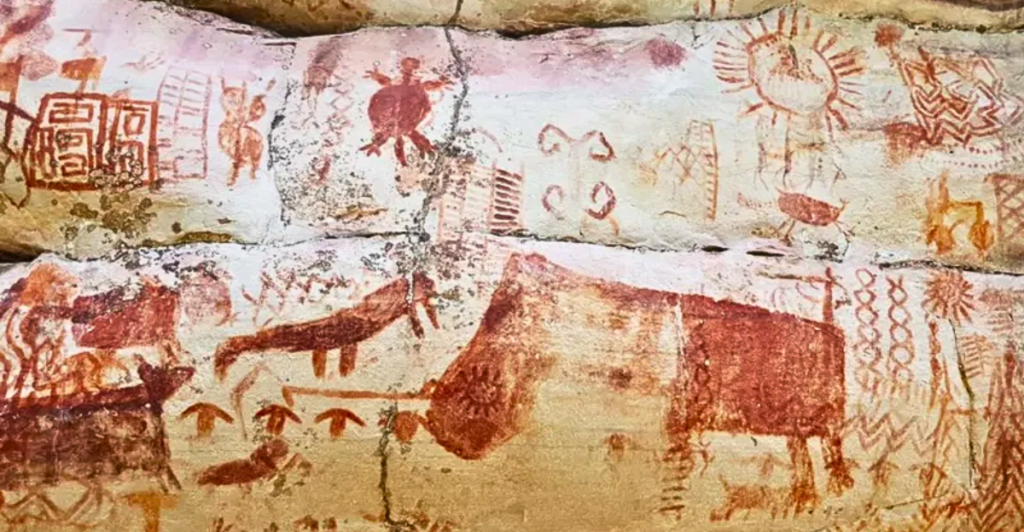
Deep in Colombia’s immense Amazon rainforest, archaeologists made an incredible discovery: an expansive group of ancient rock paintings dated to around 12,500 years ago. The ochre paintings, which were found on Serranía de la Lindosa’s imposing cliff walls, stretch across nearly 8 miles, making it one of the largest known prehistoric art galleries in the world.
Thousands of images vividly represent humans, animals, and geometric patterns, providing an unprecedented glimpse into the lives and surroundings of early Amazonian inhabitants.
This discovery refutes previous hypotheses of human settlement in South America and reveals a rich cultural and ecological history preserved in stunning pigments that have withstood centuries.
The Serranía de la Lindosa Site
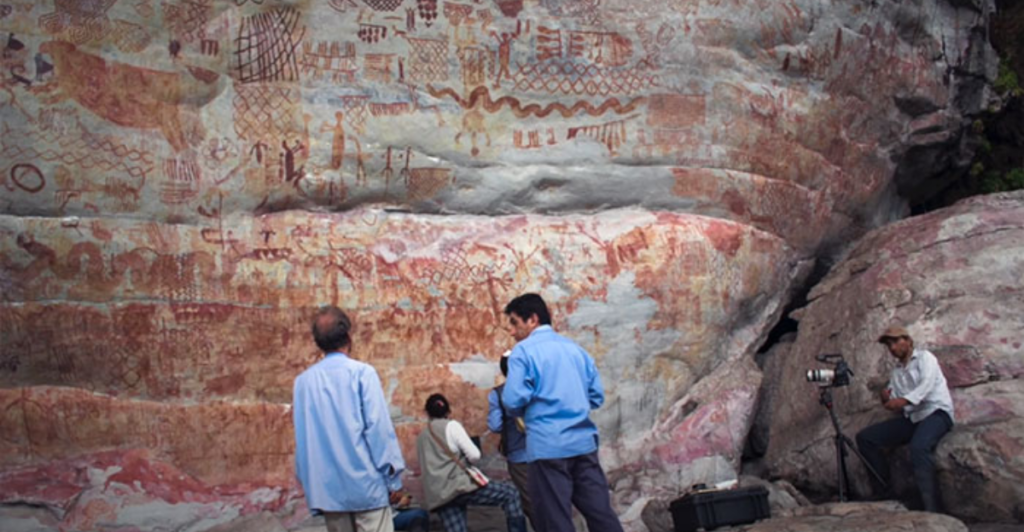
Serranía de la Lindosa is a remote mountainous region in Colombia’s Guaviare Department, tucked away in the thick jungle of the Amazon rainforest. It is famous for its expansive painted rock art on cliff faces overlooking the jungle cover.
The artwork, which is painted using primarily red and yellow ochre pigments, showcases the artistic expression of ancient communities and is the biggest prehistoric art gallery ever discovered in the Americas, spanning roughly 8 miles.
The researchers refer to the site as a monumental testament to the artistic and cultural life of ancient communities, which provides vital information about how these early human beings existed and interacted with one another and their environment.
Ice Age Giants and Extinct Megafauna
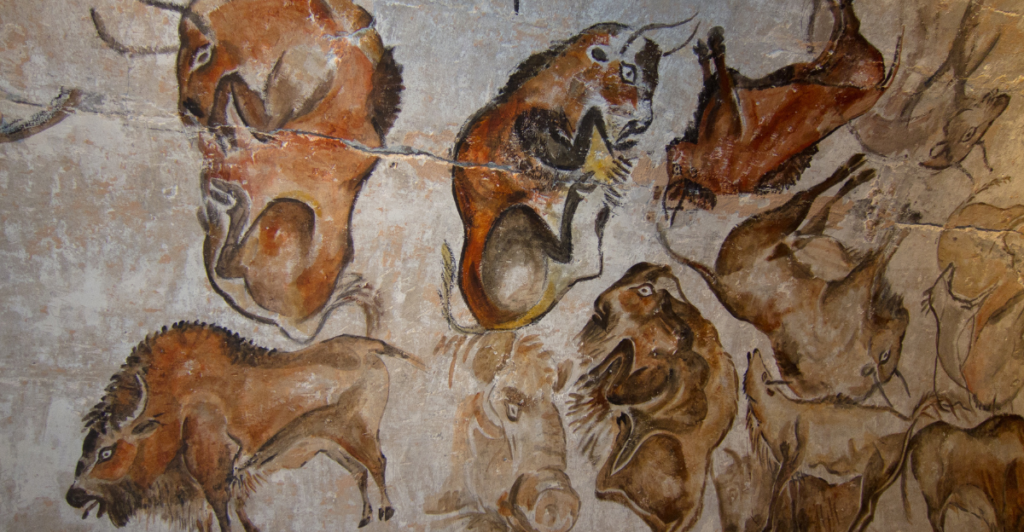
The most fascinating aspect of the Serranía de la Lindosa rock art is the representation of extinct megafauna, or large mammals, that roamed South America toward the end of the Ice Age. Among the animals depicted are giant ground sloths, distant relatives of elephants such as gomphotheres, and other giant herbivores that perished thousands of years ago.
The animals’ presence in the rock art indicates that early humans coexisted with the massive animals, offering significant testimony about the timeline of human migration and environmental conditions. Further, the painted animals indicate that they held cultural significance, possibly as food or important religious figures.
Artistic Techniques and Lasting Materials
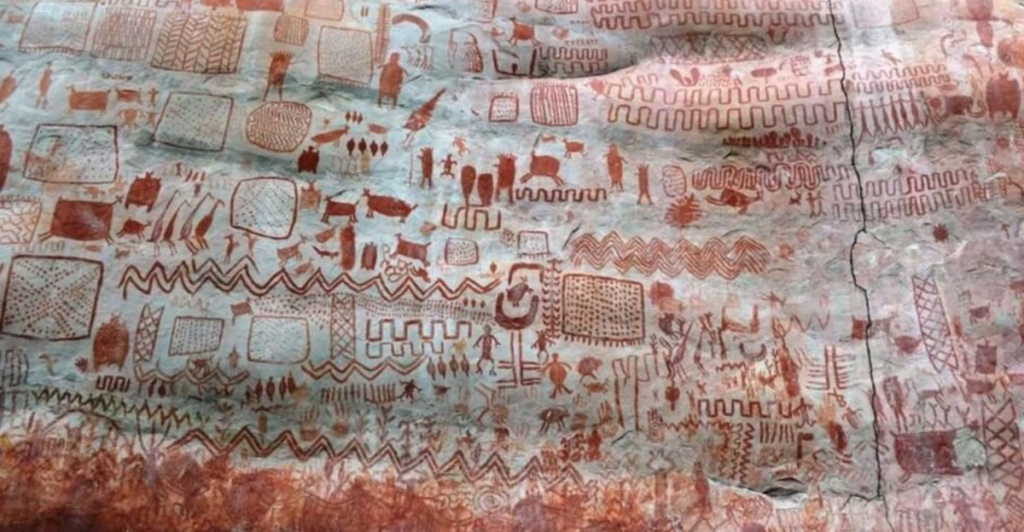
The artists demonstrated remarkable skill and knowledge in their use of natural materials, using primarily ochre pigments from iron-rich clays to make bold reds and yellows.
To create this rock art, early humans used their fingers, plant-based brushes, or blew paint through hollow reeds, techniques which allowed very fine work and gentle textures.
Ochre was not only practical since it was readily available and durable, but also symbolic. It has long been associated with ritual and artistic expression in ancient cultures worldwide. The clay-based pigments ensured that the rock art would survive for over 12,000 years.
Human Figures and Scenes of Daily Life
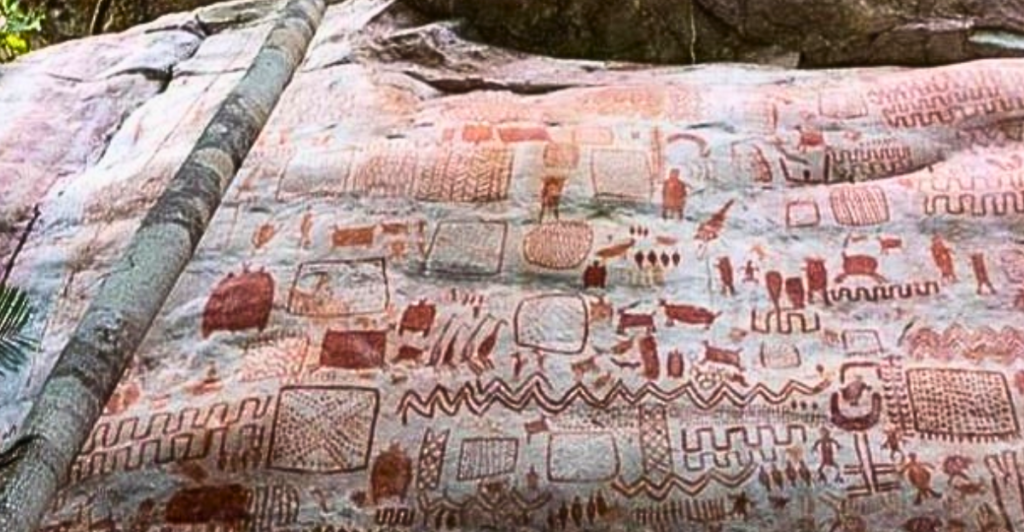
The rock art is filled with lively human figures performing numerous and diverse activities that reveal a lot about prehistoric social life. The figures are depicted as using bows and arrows to hunt and fish, and engaging in activities such as dancing and ceremonial rituals.
They are shown to have interacted with animals and appear to have used wooden platforms, possibly to in an effort to reach higher on the cliff faces to paint or hunt. These rich descriptions provide a unique window into the daily lives, social organization, and cultural practices of early Amazonians.
As a result, we now have a better understanding of the importance of cooperation, communication, and the deep relationship with nature that these societies had, which likely contributed to their survival.
Symbolism, Mythology, and Transformation

Aside from literal depictions, the rock art also features symbolic and mythological illustrations that suggest advanced spiritual beliefs. Some of the works show figures that change from human to animal shape, with an implication of a world where distinctions between species were fluid.
Such shape-shifting forms most likely refer to possible shamanistic practices, where spiritual leaders communicated with animal spirits or assumed their identities to gain power and insight. The symbolic nature of the rock art speaks to this society’s complex spiritual and cultural systems.
This symbolism is representative of a sophisticated cosmology in which animals, people, and natural events were seen as interconnected in a web of life, reflecting the rich cultural and religious foundation of these prehistoric societies.
Biodiversity in Prehistoric Amazonia
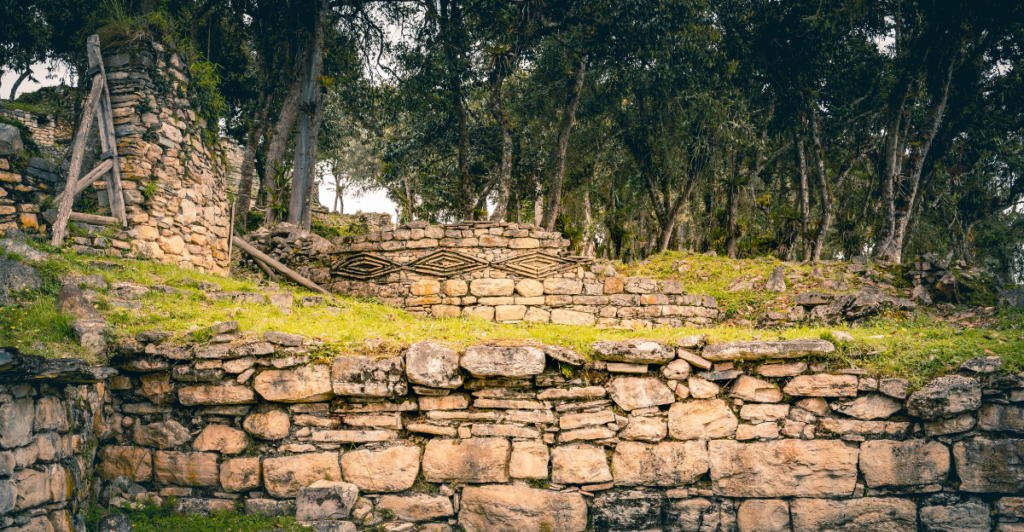
The diversity of animals represented in the rock art is striking and reflects the rich biodiversity of the prehistoric Amazon. Images include deer, tapirs, turtles, birds, lizards, monkeys, fish, and waterfowl, representing a range of species that inhabited the forests, rivers, and wetlands of the region.
This variety speaks to the abundance of natural resources available to early humans and suggests that these animals would have had various ecological roles, whether as food, spiritual entities, or ecological markers.
The detailed drawings provide significant insights into the ancient Amazonian ecosystem and how early humans co-existed with it.
Human Migration and Archaeological Insights
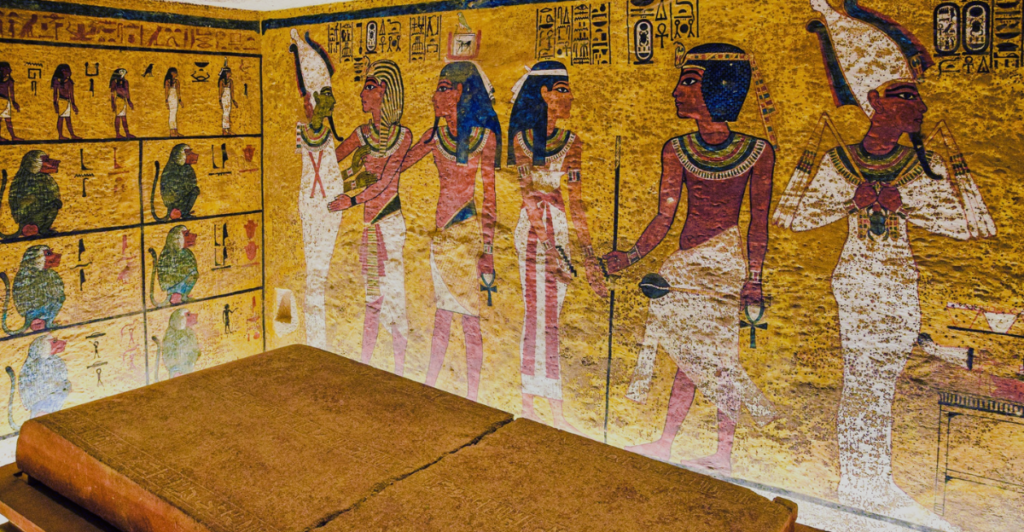
The discovery of the Serranía de la Lindosa rock art has significant implications for early human migration and settlement patterns in South America. The depictions of extinct megafauna indicate when early humans first entered the Amazon basin, while the variety of scenes signifies adaptive strategies for survival in a tropical rainforest environment.
When comparing the rock art with other sites across the Amazon and Andes, researchers discovered that these early humans shared cultural practices and their art had common motifs, suggesting early populations were interconnected despite geographic barriers.
This data enhances our knowledge of prehistoric human adaptation and creativity in varied environments and contributes to a broader understanding of prehistoric life in the Amazon.
Preservation and Modern Technology
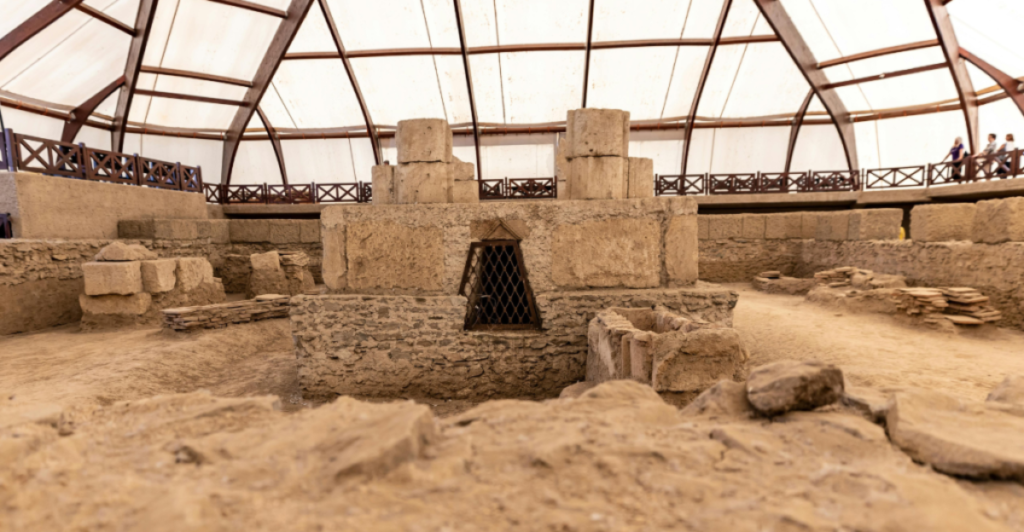
Conservation of the fragile Serranía de la Lindosa rock art site has become a priority because of environmental hazards, such as humidity, overgrown vegetation, and natural erosion. Thus far conservation efforts have included community collaboration to protect the site while respecting its cultural significance and using advanced technologies.
To save this priceless heritage, scientists use state-of-the-art technologies, such as drone photogrammetry, 3D scanning, and high-resolution digital imaging, to record and track the paintings.
These tools allow scientists to create detailed records without physically disturbing the site, enabling them to continue studying it while also using these records for educational and research purposes through its virtual accessibility.
Cultural Heritage and Future Excavation
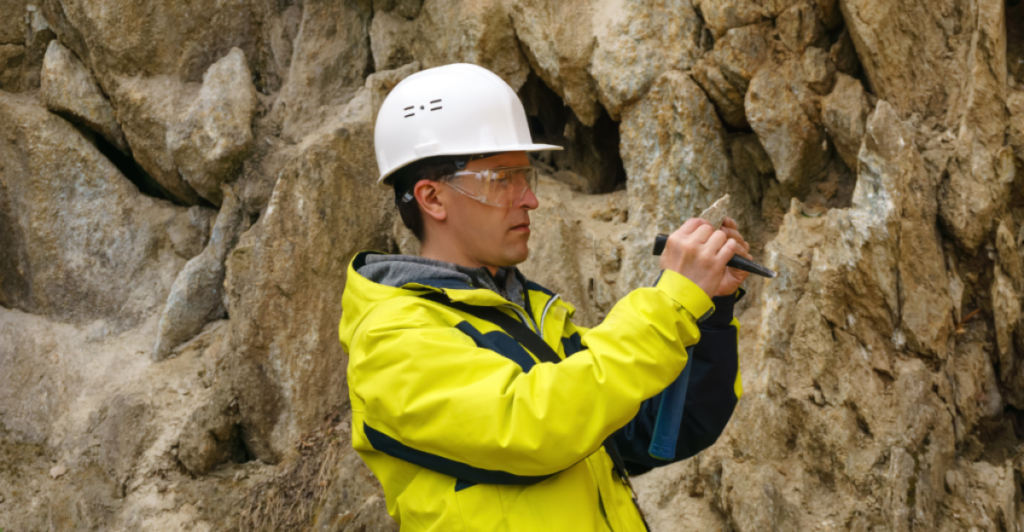
For Indigenous peoples of the Amazon, the rock art in Serranía de la Lindosa represents a strong cultural and ancestral identification. It is a physical link to their identity, religion, and heritage, and as such, it needs to be protected with care and sensitivity.
Studies in the future will continuously rely on interdisciplinary techniques—combining archaeology, anthropology, ecology, and computer technology—to gain greater insights into these ancient civilizations.
Meanwhile, virtual tours and documentaries make the site accessible to a global audience in the hopes of fostering appreciation for the shared human story embedded in these remarkable paintings and inspiring efforts to protect our collective past.
Explore more of our trending stories and hit Follow to keep them coming to your feed!

Don’t miss out on more stories like this! Hit the Follow button at the top of this article to stay updated with the latest news. Share your thoughts in the comments—we’d love to hear from you!







